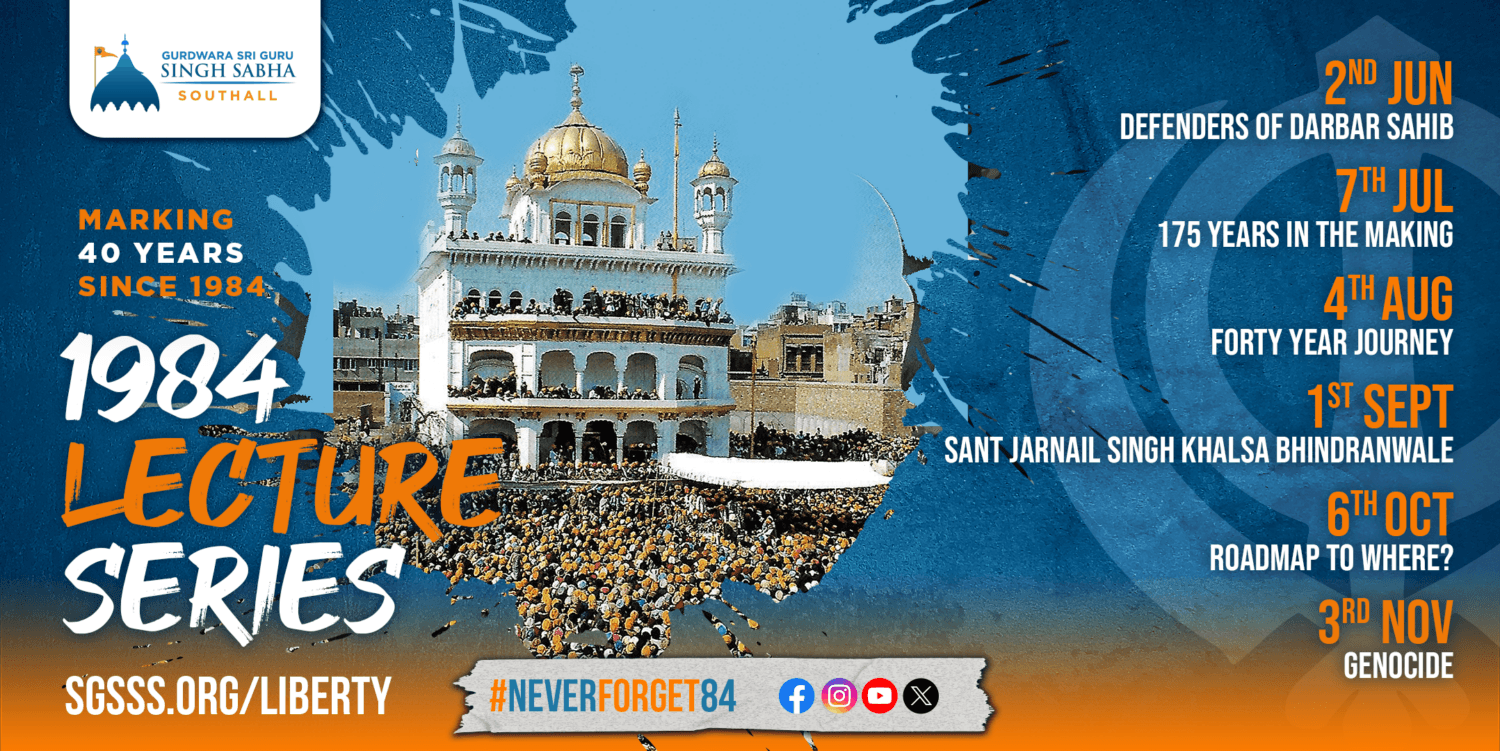Liberty
“The army went into Darbar Sahib not to eliminate a political figure or a political movement but to suppress the culture of a people, to attack their heart, to strike a blow at their spirit and self-confidence.”
– Dr Joyce Pettigrew, The Sikhs of the Punjab (1995)
“The Government wanted to destroy Sikh history. Otherwise how do you explain the fire? It [Library] was set on fire two days after the action. It was a collection of ancient books, Khardas, handwritten beeds, Janam Sakhis and Hukamnamas.”
– Giani Kirpal Singh, Surya magazine (1984)
“The slaughter of young Sikhs brought in from the villages in the surrounding countryside shows that it was an attack directed at the fabric of Sikhism, in short to give the irksome Sikhs a bloody nose, humble them forever and remove the threat of any further revolt.”
– Lord Indarjit Singh, Sikh Messenger (1984)
Since the creation of India and Pakistan, Indian-Punjab where the Sikhs had determined to remain, was in constant flux politically and socially. Punjabis were outraged with each passing year as the promises made to them failed to materialise. As time passed, peaceful protest gave way to State-wide strikes, but as these too failed to garner an adequate response, civil disobedience became the only recourse for Punjabis.
As this was predominantly Sikh-led, the struggle became synonymous with Sikh issues of inequality in the newly-formed India and when the Dharam Yudh Morcha was launched (Agitation for the Righteous Struggle) the Unitary Indian State made sure they took the opportunity to strike a damning blow at the agitating Sikh psyche. This is the reality behind the 1984 invasion of the Darbar Sahib, the physical assassination of the Sikh leader Sant Jarnail Singh Bhindranwale and the parallel occupations of scores of Gurdware and Sikh centres around the sub-continent.
As the dust settled over the shattered husk of the Akal Takht, the Sikh nation, wounded beyond measure, took stock of the situation.
The Darbar Sahib complex, a place of great beauty, the spiritual and political centre of the Sikh way of life and of the Sikhs as a people, their historic home from years of invasion, had its sanctity destroyed. It was an occasion, where their social class, their family background, their service to and their positions in the structures of state signified nothing. The very fact that they were Sikh removed their status and their rights from them.
The death toll of the operation was enormous. The fact that the Government White Paper was fabricated to hide civilian casualties, now deemed to number 5000+, only alienated the Sikh community further. The Government’s handling of villagers marching on Darbar Sahib was also deplorable, as they were subjected to aerial strafing, machine gunning and ground fire.
What was it that Sikhs were struggling to achieve not just over the last four decades, but in the centuries that preceded it – what did they die defending the Darbar Sahib for? Liberty. The ultimate battle for the Sikh is to foster a society based on the freedom of all people and the destruction of hierarchical systems that curtail our rights as individuals. Whilst this might appear to be more obvious to some when we think of Guru Arjan’s opposition of Jahangir, it is in essence the same battle fought against the Indian political administration in 1984.
The Akal Takht may have been shelled and bombed, but it was rebuilt by the Sikh Panth and continues to shine as a beacon for the cause of emancipation of all, everywhere.
